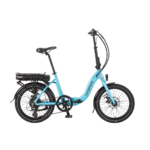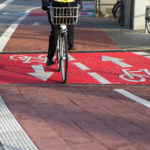Thanks for the kind offer MTB1956, but I'm still mulling over all the ideas given on here.
Yes, I quite understand the basic inefficiency of using battery electricity to move a bike and then generating more electricity from that movement to power the lights, but I mentioned in my original question that this was for my human powered bikes.
On my "almost" UK road legal bike, (see, I'm learning ! ), there's a very nice LED rear lamp incorporated into each rack battery pack, and quite a powerfull front LED lamp, so that's what rather spoilt me when I use my non-electric bikes.
), there's a very nice LED rear lamp incorporated into each rack battery pack, and quite a powerfull front LED lamp, so that's what rather spoilt me when I use my non-electric bikes.
Thanks again for all the ideas, much appreciated.
I do actually have a rather nice Sachs hub dynamo in a spare 700c front wheel, and the idea of a hybrid DIY led system with battery backup is appealing, but the comments about how practical self contained LED lights are now with their much longer battery life makes the simplicity of that even more attractive.
..and I could even just buy one good quality set and shift it quickly to whichever bike or Trike I'm using.
I was looking at the Cree T6 that d8veh mentioned and they look pretty good for the front.
Yes, I quite understand the basic inefficiency of using battery electricity to move a bike and then generating more electricity from that movement to power the lights, but I mentioned in my original question that this was for my human powered bikes.
On my "almost" UK road legal bike, (see, I'm learning !
Thanks again for all the ideas, much appreciated.
I do actually have a rather nice Sachs hub dynamo in a spare 700c front wheel, and the idea of a hybrid DIY led system with battery backup is appealing, but the comments about how practical self contained LED lights are now with their much longer battery life makes the simplicity of that even more attractive.
..and I could even just buy one good quality set and shift it quickly to whichever bike or Trike I'm using.
I was looking at the Cree T6 that d8veh mentioned and they look pretty good for the front.






